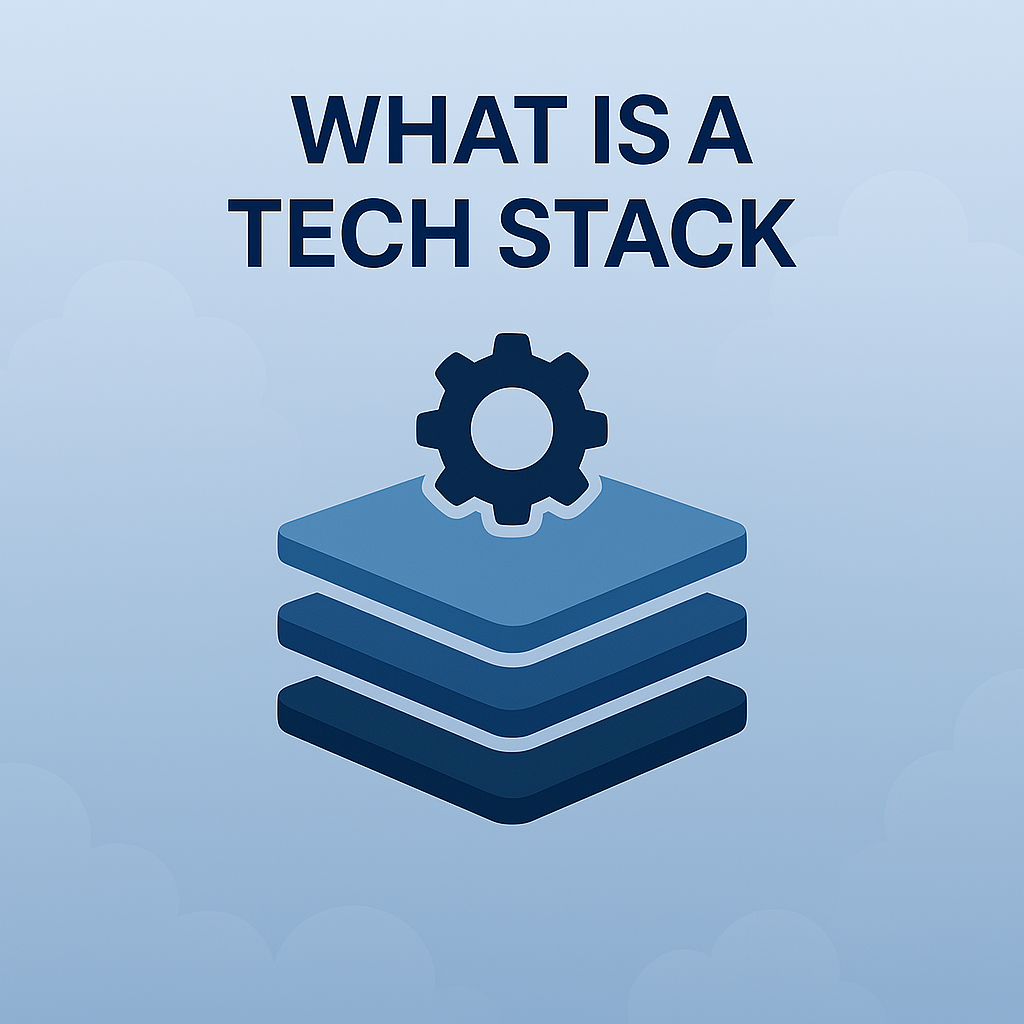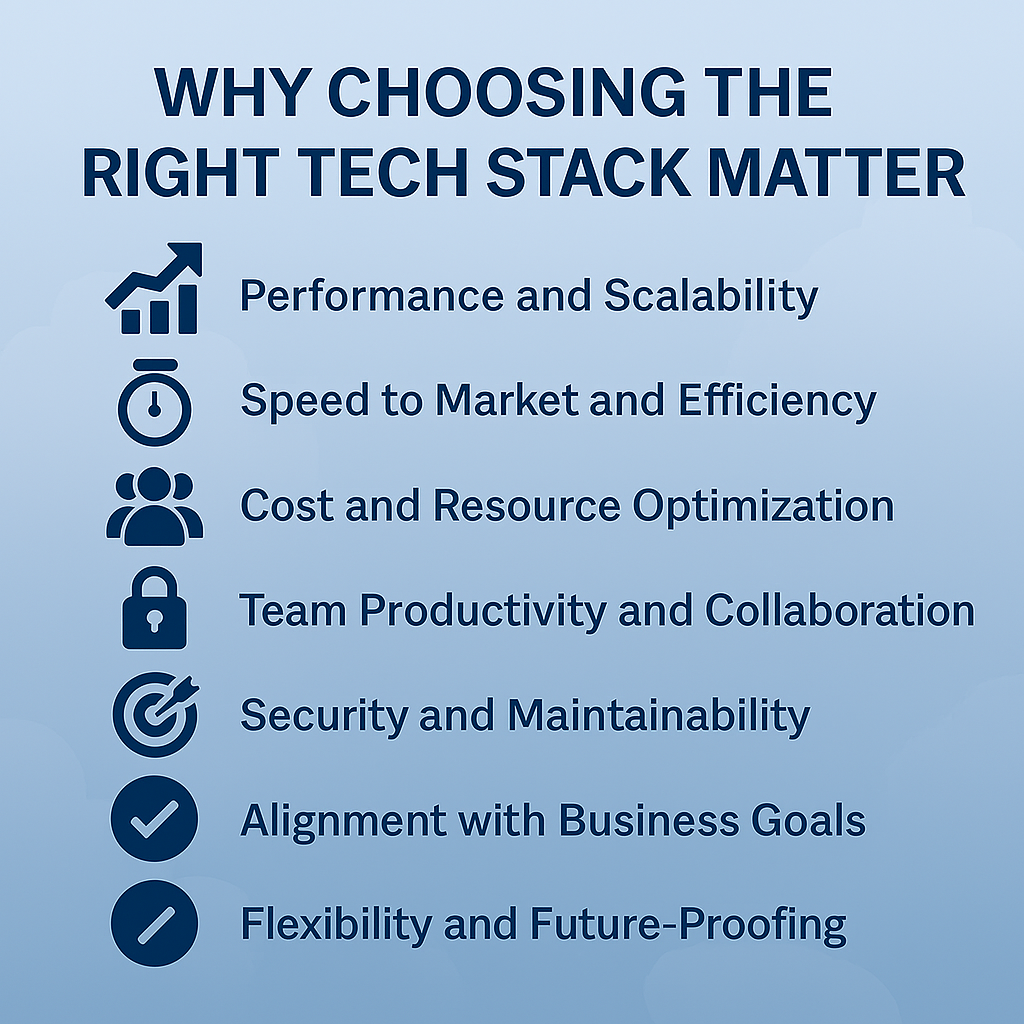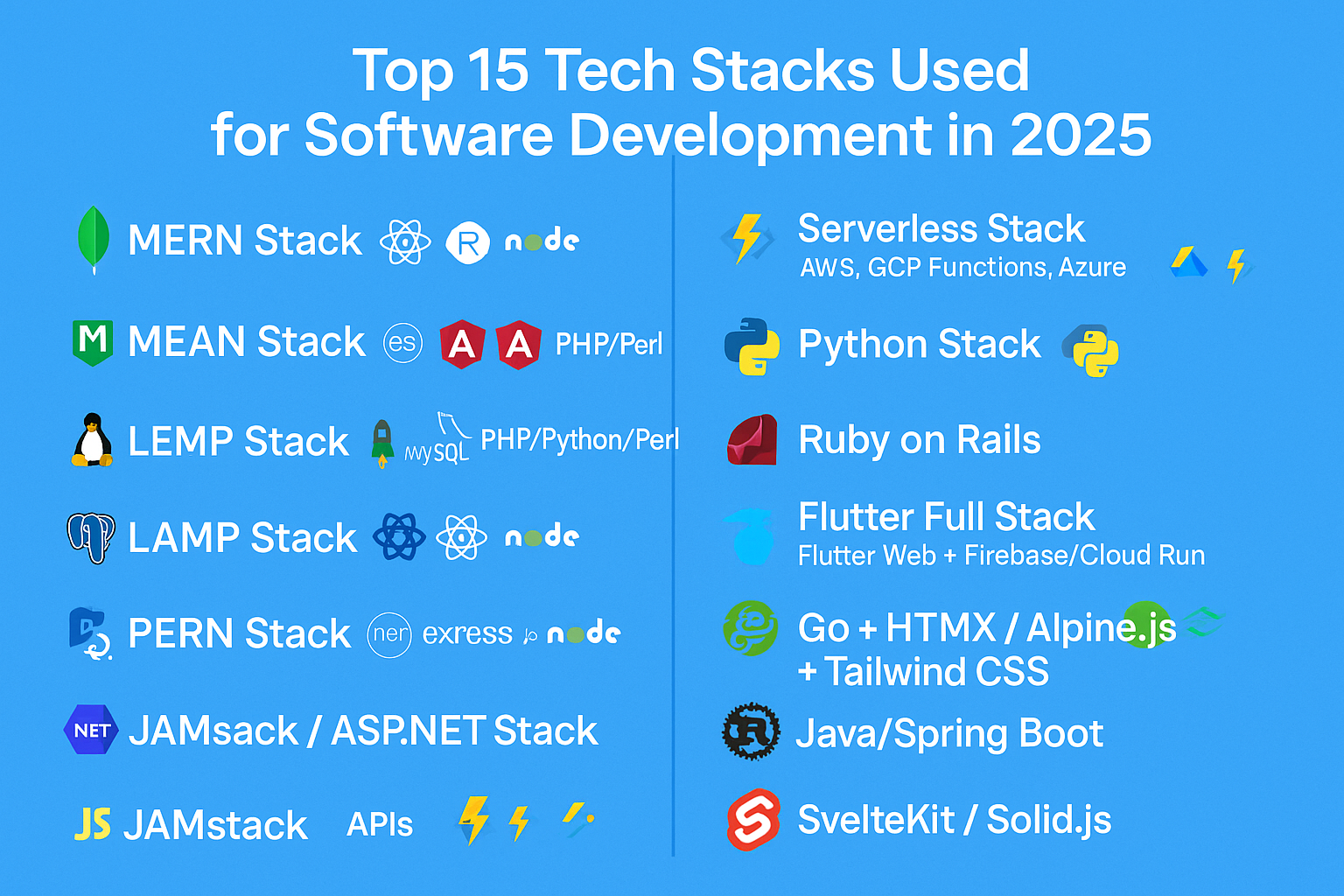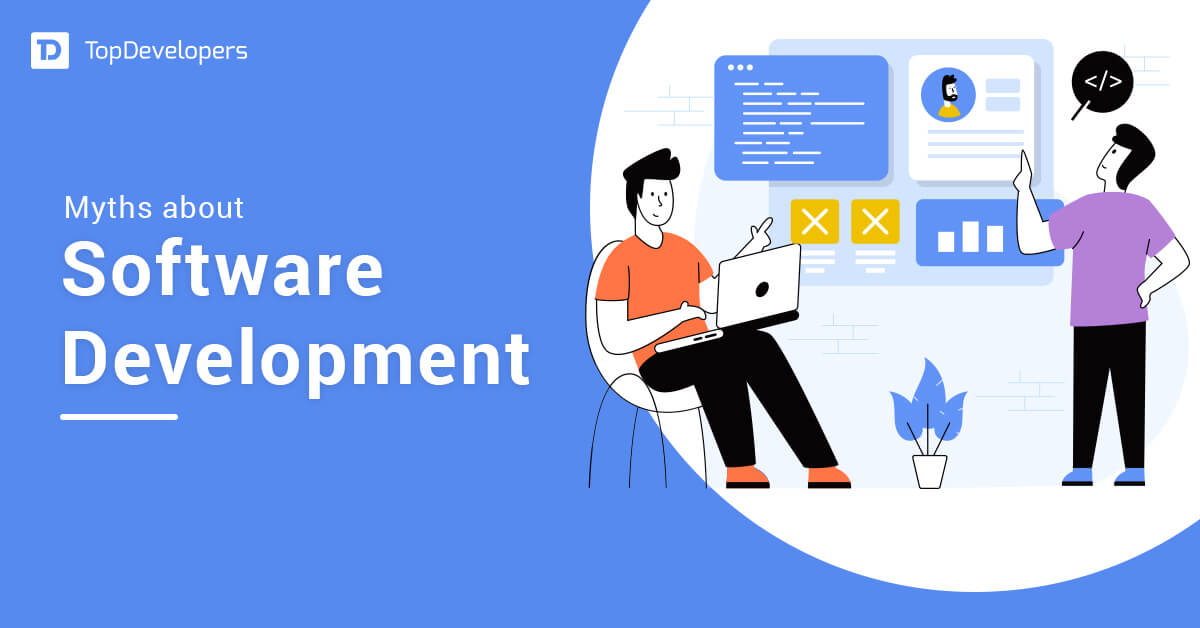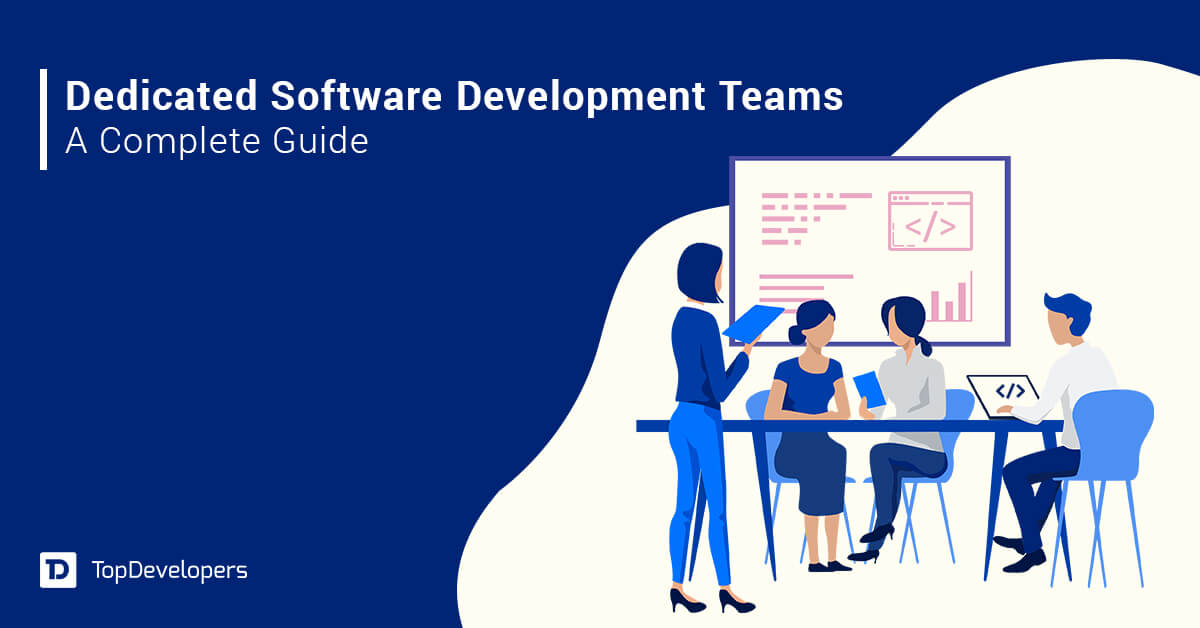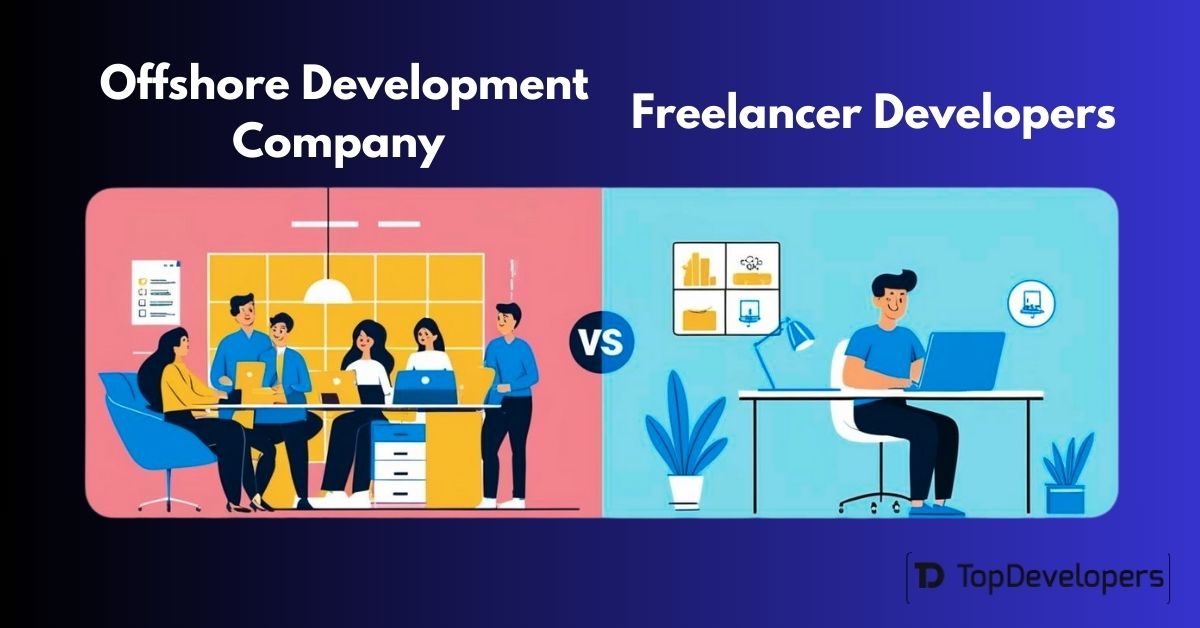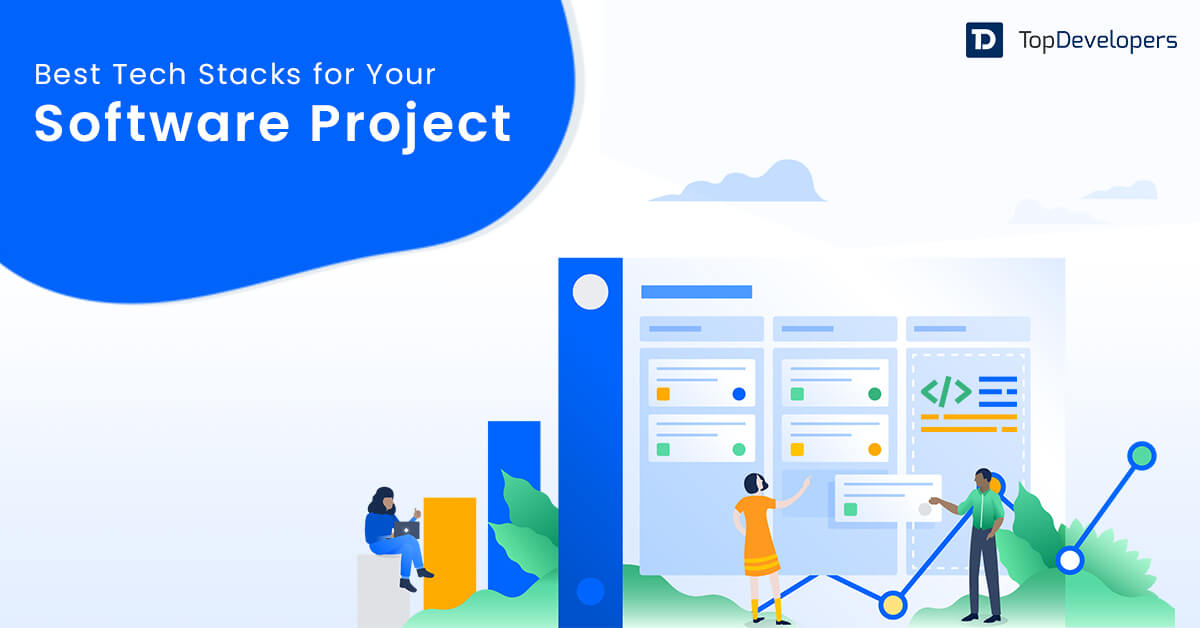
Often referred to as a tech stack, a technological stack is a set of tools, coding languages, libraries, frameworks, and technologies cooperating to produce and operate the product. All things considered, the tech stack of the program comprises every component used in the creation of software. Facebook’s tech stack, for example, combines Swift, GraphQL, Cassandra, PHP, and Hadoop. The optimum tech stack for software development relies on the objectives, team experience, scalability requirements, and target platform of your project. Still, certain tech stacks are clearly the best options for 2025 because of their adaptability for current application needs, performance, community support, and flexibility.
As an entrepreneur, having a clear understanding of the tech stack will enable you to assess the technical capabilities of your software engineers.
Table of Contents
- What Is a Tech Stack?
- Tech Stack Components Explained
- Why Choosing the Right Tech Stack Matters?
- The Top 7 Tips For Choosing Your Tech Stack
- Top 15 Tech Stacks Used for Software Development in 2025
- 1. MERN Stack (MongoDB, Express.js, React, Node.js)
- 2. MEAN Stack (MongoDB, Express.js, Angular, Node.js)
- 3. LEMP Stack (Linux, Nginx, MySQL, PHP/Python/Perl)
- 4. LAMP Stack (Linux, Apache, MySQL, PHP)
- 5. PERN Stack (PostgreSQL, Express.js, React, Node.js)
- 6. .NET Core / ASP.NET Stack
- 7. JAMstack (JavaScript, APIs, Markup)
- 8. Serverless Stack (AWS Lambda, GCP Functions, Azure Functions)
- 9. Python Stack (Django or Flask)
- 10. Ruby on Rails
- 11. Flutter Full Stack (Flutter Web + Firebase/Cloud Run)
- 12. Go + HTMX / Alpine.js + Tailwind CSS
- 13. Java/Spring Boot
- 14. Rust + Actix-Web
- 15. SvelteKit / Solid.js
What Is a Tech Stack?
In technology, a tech stack is the set of technologies—programming languages, frameworks, libraries, databases, front-end and back-end tools, and APIs—used to create and operate a software application or system. It covers the front-end, client-side components—which handle everything users interact with—as well as the back-end, server-side components—which oversee the logic, database, and server operations of the program.
Typical tech stacks could consist of
- Programming languages—such as JavaScript and Python—have
- Structures (React for front-end, Django for back-end).
- Database (like MySQL or MongoDB)
- Web servers (such as Apache and Nalkyzed)
- Infrastructure and deployment tools include AWS, Docker, and others.
The choice of tech stack affects the program’s scalability, maintainability, performance, and the development skills required.
Tech Stack Components Explained
A tech stack—also called a technology stack or application stack—is the set of technologies used to create and operate an application. Every top software developer has a professional frontend and backend development team. It includes both the software and, at times, the hardware or cloud infrastructure required to produce a functioning product. Knowing the components thus will enable you to create your software with much more ease.
Core Components of a Tech Stack
1. Frontend (Client-Side)
- This is everything the user interacts with directly in their browser or app interface.
- Main technologies include
- HTML (Hypertext Markup Language): Structures the content on web pages.
- CSS (Cascading Style Sheets): Styles and formats the content, controlling layout, colors, and fonts.
- JavaScript: Adds interactivity and dynamic behavior. Modern stacks often use frameworks/libraries like React, Angular, or Vue.
- The frontend focuses on designing the user interface (UI) and enhancing the user experience (UX).
2. Backend (Server-Side)
- Handles all the behind-the-scenes logic, database interactions, authentication, and server configuration.
- Essential elements consist of
- Programming Languages: such as Python, Java, PHP, Ruby, or Node.js.
- Frameworks include databases: they serve as storage and management systems for data. Rails (Ruby) and Laravel (PHP).
- Databases: Where data is stored and managed. Examples include MySQL, PostgreSQL, MongoDB, and Oracle.
- Servers: Physical or virtual machines that host the application and respond to client requests.
- APIs: Interfaces for communication between frontend and backend or with third-party services
3. Infrastructure & Supporting Layers
- Operating System: Linux, Windows, or macOS; the surroundings the server operates in
- Web server: Apache, Nginx, or IIS—software designed to manage HTTP inquiries.
- Load Balancers: For dependability and performance, spread arriving traffic across many servers.
- Cloud Services: Many contemporary stacks host, scale, and provide additional services on cloud platforms (AWS, Azure, Google Cloud).
- Security & Analytics: Instruments for tracking, safeguarding, and performance analysis of applications
Why Choosing the Right Tech Stack Matters?
Your chosen tech stack directly affects your development pace, application performance, cost, scalability, and capacity to attract technical talent. Project delays, technical debt, and user discontent may all follow from a misaligned stack. Choosing the correct stack guarantees that your project remains on budget and on schedule. We will also give a thorough review of some of the greatest software development stacks, along with advice on which one best fits your project.
Choosing the correct tech stack is a fundamental choice that will either help or hinder your company or project. Here is the reason this decision is so crucial:
1. Performance and Scalability
- Particularly under severe data loads or high user traffic, the tech stack directly determines the speed, responsiveness, and dependability of your application.
- Certain technologies are more suitable for managing large operations and future expansion; therefore, make sure your product can evolve and develop as user demands do.
2. Speed to Market and Efficiency
- Faster development cycles made possible by the proper stack let you swiftly introduce products, compile consumer input, and iterate effectively.
- Particularly important for startups and MVPs, it simplifies processes, cuts needless complication, and keeps your team on target.
3. Cost and Resource Optimization
- Choosing smart tech stacks helps to reduce development and maintenance expenses, hence reducing costly rewrites and technological debt.
- Leveraging technology your staff is already adept at lowers the learning curve and increases output, therefore saving both time and money.
4. Team Productivity and Collaboration
- Because developers may more readily comprehend and help each other with their code, a uniform stack promotes improved team communication and cooperation.
- Selecting popular, well-supported technology guarantees access to a variety of community resources and documentation and helps acquire and onboard fresh people more easily.
5. Security and Maintainability
- The stack you decide upon affects the security posture of your application—necessary for safeguarding private information and preserving user confidence.
- Well-supported technologies with active communities get frequent updates and patches, therefore smoothing out long-term maintenance and providing safer solutions.
6. Alignment with Business Goals
- Every project has particular needs: target audience, money, schedule, and future vision.
- The correct tech stack guarantees that your technological decisions complement these corporate goals, therefore supporting both short-term demands and long-term strategies.
7. Flexibility and Future-Proofing
- By using contemporary, in-demand technologies, a well-selected stack helps you remain competitive and facilitates faster integration of new features and outside services.
- On the other hand, using antiquated or specialized technology could restrict your capacity to innovate and complicate future recruiting and growth.
The Top 7 Tips For Choosing Your Tech Stack
Whether creating a financial app, an e-commerce platform, or an artificial intelligence-driven solution, choosing the appropriate technology stack is a vital choice for any software development project. Directly affecting speed, scalability, and development efficiency is a tech stack—that is, the mix of programming languages, frameworks, libraries, and tools used to create an application. Selecting the incorrect stack could cause delays, excessive expenses, or an unsatisfactory user interface. Seven basic ideas are presented in this paper to help you choose a tech stack that guarantees long-term success and fits the objectives of your project.
1. Define Your Project Requirements
To guarantee the tech stack satisfies your demands, first precisely list the functional and non-functional requirements of your project.
- Action: Determine important characteristics (e.g., real-time transactions for a fintech app, integration of AI models, performance requirements (e.g., sub-second reaction times), and scalability demands). Think about user base size, data volume, and security needs.
- Why It Matters: Choosing technologies incapable of supporting important features is avoided by a thorough knowledge of requirements. For a finance app needing great security
- For instance, strong encryption libraries are absolutely necessary.
- Example: For instance, a firm creating an artificial intelligence-driven loan service gives Node.js for real-time APIs top priority along with a stack featuring Python and TensorFlow for ML capability.
- Tip: Create a requirements document including features, performance measures, and compliance needs—e.g., GDPR for fintech.
2. Evaluate Scalability and Performance
Select a tech stack that under different loads provides good performance and enables expansion.
- Action: Choose technology able to manage rising user traffic or data volume. For example, microservices designs using cloud platforms like AWS or Google Cloud guarantee scalability. With React for quick frontends or Go for effective backends, maximize for performance.
- Why It Matters: As user demand rises, scalability keeps congestion free. Poor scalability planning causes half of app failures, according to 2023 research. For its finance platform, Stripe maintains 99.9% uptime by processing millions of daily transactions using Go and AWS.
- Example: Use technologies like JMeter to test scalability, then give cloud-native solutions top priority for flexibility.
- Tip: A scalable stack guarantees that as your program expands, it runs consistently.
3. Consider Development Speed and Cost
To maximize resource allocation, balance development pace with financial restrictions.
- Action: Select frameworks like Ruby on Rails or Django (Python) with plenty of resources and community support to speed development. Analyze recruiting expenses for engineers knowledgeable in your preferred stack; because of talent availability, common languages like JavaScript are frequently reasonably priced.
- Why It Matters: While cost control guarantees project feasibility, faster development lowers time-to-market. Using open-source models, firms saved 30% on development in 2024, according to industry estimates. For instance, a finance business rapidly develops a payment app using Node.js and Express, employing a large developer pool to maintain cheap prices.
- Example: Use open-source tools to evaluate developer hiring expenses on LinkedIn or Upwork.
- Tip: A reasonably priced stack speeds development without sacrificing quality.
4. Prioritize Security and Compliance
Particularly for fintech or AI-driven applications managing private data, security is very vital.
- Action: Choose technologies including safe frameworks (e.g., Spring Security for Java) or built-in security elements (e.g., OpenSSL). Verify compliance for financial applications with PCI-DSS or GDPR.
- Why It Matters: IBM estimates that fintechs pay, on average, $4 million per event in 2023. Safe stacks prevent fines and inspire user confidence.
- Example: For instance, PayPal protects transactions using Java with strong security frameworks, therefore guaranteeing PCI-DSS compliance.
- Tip: Run frequent vulnerability searches and include security tools like OWASP ZAP in development.
5. Assess Community and Ecosystem Support
Select technologies supported by their community and with a robust tool and library environment.
- Action: Opt for languages and frameworks with active communities, such as JavaScript (with npm) or Python (with PyPI). Check for documentation, tutorials, and third-party integrations on platforms like GitHub or Stack Overflow.
- Why It Matters: Strong community support reduces development hurdles and ensures long-term viability. In 2024, 70% of developers relied on community-driven solutions for faster debugging, per Stack Overflow.
- Example: A fintech app uses React and its ecosystem of libraries to quickly integrate payment gateways like Stripe.
- Tip: Review GitHub stars, forum activity, and package availability to gauge ecosystem strengths.
6. Ensure Compatibility with Existing Systems
Your tech stack should fit either third-party services or current infrastructure without any trouble.
- Action: Check fit with APIs, older systems, or outside tools (such as artificial intelligence models or payment gates). Bridge current and ancient systems via middleware or RESTful APIs.
- Why It Matters: With 60% of fintechs reporting integration challenges in 2023, per industry research, incompatibility hampers progress.
- Example: For instance, a bank uses Python and REST APIs to combine its AI fraud detection system with a classic mainframe, therefore lowering integration time by 40%.
- Tip: Map current systems and choose adaptable APIs—like Node.js—for flawless integrations.
7. Plan for Future Maintenance and Updates
Choose a tech stack that fits long-term maintenance and future trend adaptation.
- Action: Choose technologies with active updates and long-term support (LTS) versions, like Java or .NET. Avoid niche or outdated tools that may become obsolete. Consider emerging trends like AI integration or serverless computing.
- Why It Matters: Outdated stacks increase maintenance costs and technical debt. A 2023 study showed 45% of apps required costly rewrites due to obsolete technologies.
- Example: A fintech app adopts Python with LTS support for its AI-driven features, ensuring updates for five years.
- Tip: Check release cycles and roadmaps for frameworks to ensure ongoing support.
Top 15 Tech Stacks Used for Software Development in 2025
Top software development companies are competent at choosing the most appropriate tech stack, thereby allowing them to provide the best available software development solution.
These days, the IT sector is proud of many stacks of software development technologies. The most often used ones are here. These are the most frequently used software development technology stacks you should be aware of in 2025, based on expert opinion and commercial trends.
The tech stack scene in 2025 exhibits continuous developments in web development, cloud computing, artificial intelligence, and microservices. These are the most notable stacks along with their salient features:
1. MERN Stack (MongoDB, Express.js, React, Node.js)
This one’s like the avocado toast of tech stacks—still super popular, super versatile, and just works for so many use cases.
Why it’s hot:
- You write JavaScript all the way down—from the UI to the database logic.
- React’s component-based design makes UI building feel like playing with Legos.
- Node + Express gives you a lightweight, high-performing backend.
Where it shines: dashboards, SaaS tools, SPAs, marketplaces.
Real talk: Airbnb’s frontend has used MERN components heavily.
2. MEAN Stack (MongoDB, Express.js, Angular, Node.js)
Take MERN, swap in Angular for React, and you’ve got MEAN. More structure, less flexibility—but that’s sometimes a good thing.
Why it’s loved:
- Angular is great when you need strong architecture from day one.
- Still all JavaScript, so your dev team isn’t juggling languages.
Best fit: big corporate apps, dashboards, and real-time reporting tools.
Example: LinkedIn has been known to use MEAN in some backend services.
3. LEMP Stack (Linux, Nginx, MySQL, PHP/Python/Perl)
LEMP is what happens when you take the classic LAMP stack and make it leaner by dropping in Nginx instead of Apache.
Why people stick with it:
- It’s fast, scalable, and surprisingly modern—especially with newer PHP frameworks or Python.
- Great performance under heavy traffic.
Best for: WordPress hosting, e-commerce, content-heavy sites.
Tip: Tons of big WordPress setups run better on LEMP than LAMP these days.
4. LAMP Stack (Linux, Apache, MySQL, PHP)
Old but gold. LAMP is still very much alive and kicking, especially for legacy sites or small business apps.
Why it’s still around:
- Simple, reliable, and inexpensive.
- Huge documentation and support.
Best for blogs, small sites, and legacy applications.
Think of something like Joomla or older Drupal installs.
5. PERN Stack (PostgreSQL, Express.js, React, Node.js)
Just like MERN, but PostgreSQL instead of MongoDB. That one change can be a game-changer.
What’s awesome:
- PostgreSQL is a rock-solid relational database—great when data structure matters.
- Still keeps the full JavaScript experience.
Perfect for: fintech, analytics apps, anything needing complex queries.
Fun fact: Startups doing anything with money love this stack.
6. .NET Core / ASP.NET Stack
Microsoft’s modern offering is sleek, high-performing, and way more flexible than you might think.
Why devs dig it:
- Strong tooling (hello, Visual Studio).
- Great performance for enterprise-level apps.
- Works well with Azure cloud services.
Use cases: enterprise software, finance systems, large-scale backends.
Good to know: Many banks and healthcare apps are built on this.
7. JAMstack (JavaScript, APIs, Markup)
You’ve probably seen this buzzword flying around. It’s not a traditional “stack” but more of an architecture. But it’s making static cool again.
Why it’s a trend:
- Static sites are fast and super secure.
- Easily integrates with headless CMSs.
- Devs love the flexibility with frontend frameworks like Next.js or Astro.
Perfect for marketing sites, documentation, and blogs.
Hot tip: Gatsby and Hugo are JAMstack darlings.
8. Serverless Stack (AWS Lambda, GCP Functions, Azure Functions)
Why worry about servers if you don’t have to? Serverless is ideal for folks who want to focus on features, not infrastructure.
The appeal:
- You only pay when your function runs.
- Zero server maintenance.
- Great for microservices and APIs.
Use it for backend APIs, automation workflows, and small-scale tools.
Bonus: Pair it with JAMstack for even more fun.
What are the challenges of software development outsourcing?
9. Python Stack (Django or Flask)
Python lovers, rejoice. Whether you’re building an AI app or a simple CMS, Django and Flask have your back.
Why it’s awesome:
- Clean, readable code.
- Django is batteries-included; Flask is minimal and flexible.
- Perfect for data science-heavy applications.
Good for: Web apps with AI, APIs, and dashboards.
Example: Instagram started with Django. Enough said.
10. Ruby on Rails
Rails is still here. And still great. Especially if you’re a startup and want to build and launch fast. Select the best remote Ruby on Rails development service providers to build effective RoR solutions. Perfect for short MVPs and lightweight programs.
What makes it click:
- Convention over configuration—less setup, more doing.
- Tons of open-source gems to speed things up.
Best fit: MVPs, e-commerce, social networks.
Notable users: GitHub, Shopify, Basecamp.
11. Flutter Full Stack (Flutter Web + Firebase/Cloud Run)
Flutter isn’t just for mobile anymore. Combine it with Google Cloud backends, and you’ve got a full-stack dream for cross-platform apps.
Why devs love it:
- One codebase for iOS, Android, Web, and Desktop.
- Firebase makes real-time data and auth easy.
Best for: mobile-first apps, SaaS, and MVPs on a tight timeline.
12. Go + HTMX / Alpine.js + Tailwind CSS
This is the new kid on the block for developers who want speed and simplicity without bloat.
Why it’s growing:
- Go is fast and built for concurrency.
- HTMX and Alpine let you build interactive UIs without full SPA frameworks.
- Tailwind makes styling easier (once you get used to it).
Use it for APIs, dashboards, and performance-critical apps.
13. Java/Spring Boot
Still a workhorse in 2025. Spring Boot makes Java development more streamlined and way more modern than its legacy roots.
What works:
- Strong enterprise ecosystem.
- Scalable, modular, and secure.
- Tons of integrations with tools and platforms.
Good for: banks, insurance, and massive enterprise systems.
Reality: JPMorgan, Visa, and governments still trust Java.
14. Rust + Actix-Web
If performance and safety are your top priorities, Rust is where it’s at. Combine it with Actix-Web, and you’ve got a lean, mean web machine.
Why it’s making waves:
- Memory-safe and blazing fast.
- Ideal for real-time systems and microservices.
Great for gaming backends, IoT, fintech, and edge computing.
Heads up: The learning curve is real but worth it.
15. SvelteKit / Solid.js
Okay, this one’s for the frontend lovers who want speed, simplicity, and cutting-edge DX (developer experience).
Why it’s exciting:
- Minimal boilerplate, super reactive.
- Smaller bundles and lightning-fast rendering.
Best for: SPAs, interactive UIs, next-gen web apps.
Real talk: Svelte is like React with all the annoying parts stripped out.
Wrap up
The chosen tech stack by the software developers affects the software development cost. This is so because, should your tech stack be already selected, you will be recruiting software developers depending on the technologies included in it.
The right tech stack will enable you to effectively use both technical and human resources. Every tech stack has advantages and disadvantages unique to its own. Regarding software development, one of the typical misconceptions is about the newest trends. Therefore, based on the facts and requirements of your project, the tech stack should be chosen rather than depending only on the newest trends in software development. Finding the right tech stack means choosing tools that suit your project, meet your team’s abilities, and match your growth targets. Because MERN, MEAN, Django + Python, LAMP, serverless, .NET, and Flutter are stacks, they give developers opportunities to build many types of apps and services. Easier coding experiences using Next.js, Supabase, or Cursor AI are what discussions about vibe coding in 2025 stress. When you pick a stack that permits rapid development (like Flutter for mobile apps) and includes AI features (e.g., Python for machine learning), you can effectively build solutions that appeal to users. Having a strong tech stack as well as the coding mindset will ensure your work is both usable and enjoyable for everyone.
It would be advised for you to let the software development business you chose to handle the tech stack choice. You just have to make sure the hired, seasoned, and expert programmers are competent.
FAQs
1. What is a technology stack in software development?
A technology stack is a combination of programming languages, frameworks, libraries, and tools used to build and run a software application. It typically includes frontend, backend, database, and infrastructure components.
2. What are the most popular technology stacks in 2025?
Top technology stacks in 2025 include:
- MERN (MongoDB, Express, React, Node.js)
- MEAN (MongoDB, Express, Angular, Node.js)
- LAMP (Linux, Apache, MySQL, PHP)
- Django + React
- Serverless Stack (AWS Lambda, API Gateway, DynamoDB)
3. How do I choose the best tech stack for my software project?
Choose a tech stack based on your project type, team expertise, scalability needs, time-to-market, and long-term maintenance. Consider factors like community support, performance, and third-party integrations.
4. What is the difference between frontend and backend in a tech stack?
The frontend is the user interface built with technologies like HTML, CSS, JavaScript, React, or Vue, while the backend handles server-side logic, databases, and APIs using tools like Node.js, Django, Ruby on Rails, or Spring Boot.
5. Are low-code or AI-assisted tech stacks worth considering in 2025?
Yes, platforms like Vitara.ai and other AI-assisted tools allow developers and non-coders to build full-stack applications faster by automating code generation, reducing development time, and improving efficiency.
 Avantika Shergil
| May 29, 2025
Avantika Shergil
| May 29, 2025
Avantika Shergil is a technology enthusiast and thought leader with deep expertise in software development and web technologies. With over 8 years of experience analyzing and evaluating cutting-edge digital solutions, Avantika has a knack for demystifying complex tech trends. Her insights into modern programming frameworks, system architecture, and web innovation have empowered businesses to make informed decisions in the ever-evolving tech landscape. Avantika is passionate about bridging the gap between technology and business strategy, helping businesses build customized software and website, and understand about different tools to leverage effectively for their ventures. Explore her work for a unique perspective on the future of digital innovation.
